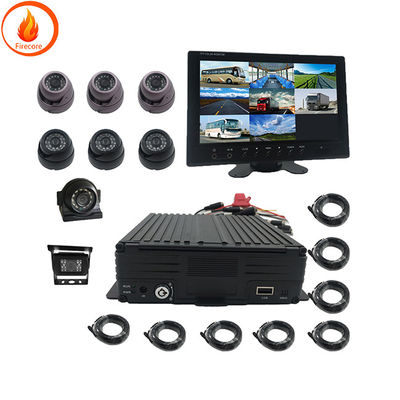Everyone should have a car that protects itself. Too many people get hurt around their cars, pay for things that aren't their fault, or find out their car is wrecked when they leave it. We're here to give people the tools to raise awareness, encourage better driving, save lives and money, stop fraud, and file insurance claims faster .... Also, to help people capture and share funny moments that happen in or around their car.
When it comes to choosing an in-car camera system, there are many different options to choose from. Here are some of the most important features to consider:
HD Video Quality:
When reviewing video footage, clear video quality is critical. Look for a driving camera with a wide-angle lens (to make sure you have a good field of view) and High Dynamic Range (HDR) that delivers full HD video at 1080p. If you want a video recording that's clear enough to see the license plate and detect whether the driver's eyes are open or closed, then go for 1080p or Full HD.
Built-in Artificial Intelligence:
The best in-car camera systems now have artificial intelligence (AI) built in. AI-enabled car recorders use edge computing to analyze the road and driver behavior in real time. This makes it possible to proactively detect dangerous behaviors, such as distracted driving and tailgating. Optional built-in alerts can warn drivers of impending collisions, helping to prevent accidents before they happen.
Network Connection:
To make sure they don't run out of space while continuously recording footage, most in-car camera systems use loop recording; they overwrite old video files to continue recording new ones. If your camera isn't networked, you'll have to manually retrieve the video from your vehicle before overwriting it. For a more reliable and convenient option, consider a networked camera. Networked cameras can automatically upload video of safety-related incidents to the cloud, giving you real-time access to the video for guidance or exoneration. This convenient remote access to video can help investigate false statements or calls from the public.
Automatic Severe Event Detection:
Be sure to choose an in-car camera system that connects to a telematics device with a built-in accelerometer, gravity sensor (for motion detection) and GPS tracking. In this way, the system can detect safety-related events such as hard braking, sharp turns, and collisions, and automatically upload before and after footage of the accident for your team to view.
Driver's Cab Voice Guidance:
The best car cameras have a built-in audio speaker that plays messages about bad events, speeding and unfastened seatbelts inside the car, alerting drivers to potentially unsafe behavior in real time. The instant feedback of in-car voice guidance has been shown to improve driver behavior and reduce preventable accidents.
Shimmering or Night Vision:
If your drivers often operate at night, it's important to choose a car camera system with low light or night vision capabilities. Look for a camera with high dynamic range (HDR) and infrared LEDs to ensure the footage remains clear at night.
Plug-and-play Installation:
Deploying an in-car camera system on dozens, hundreds or even thousands of vehicles is never easy-that is why it's so important to choose hardware that's easy to install. For example, the best car recorders include an adhesive strip that can be easily affixed to the windshield, and they're powered by a connected telematics device.
Streamlined Coaching Tools:
Software is just as important as hardware when choosing a car camera system. Look for car recorder software that helps you make sense of your raw data and footage. The best in-car camera systems offer online tools that can aggregate coachable events, easily guide drivers with suggestion scripts, and track safety trends and improvements.
Mobile Apps for Drivers:
In addition to online dashboards that can be accessed from a computer, look for in-car camera systems that offer companion smartphone apps. With a mobile app (Android phones or iphones are fine), safety managers can access the video while on the road. In the case of a no-fault accident or false claim, this makes it easy to send the video to the driver or police officer at the scene.

 Your message must be between 20-3,000 characters!
Your message must be between 20-3,000 characters! Please check your E-mail!
Please check your E-mail!  Your message must be between 20-3,000 characters!
Your message must be between 20-3,000 characters! Please check your E-mail!
Please check your E-mail! 











